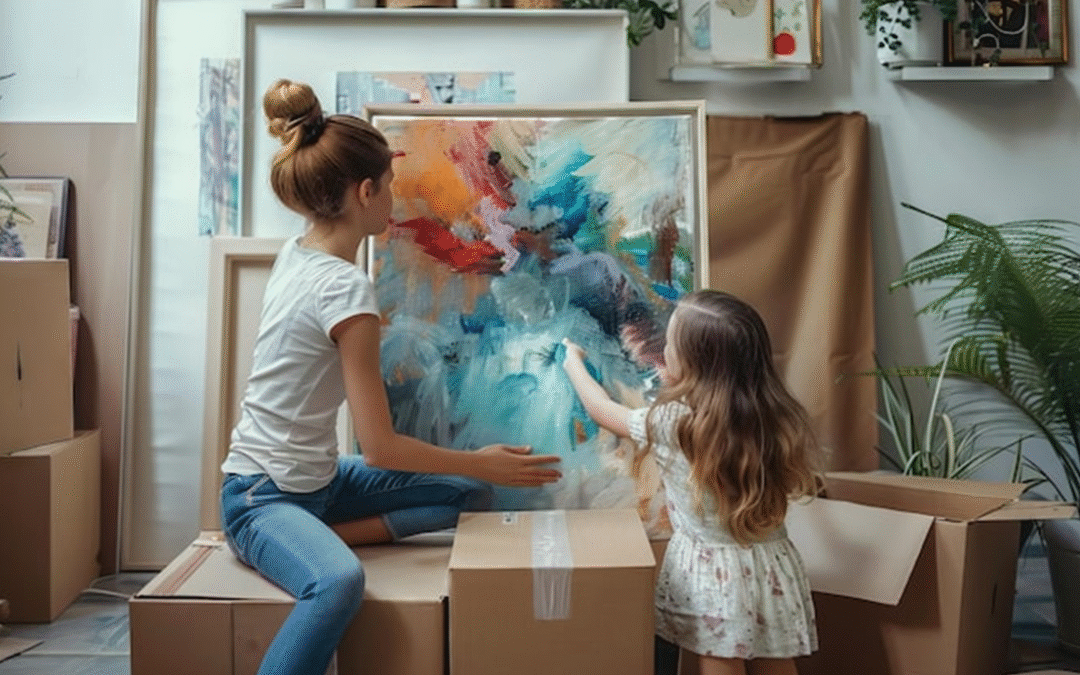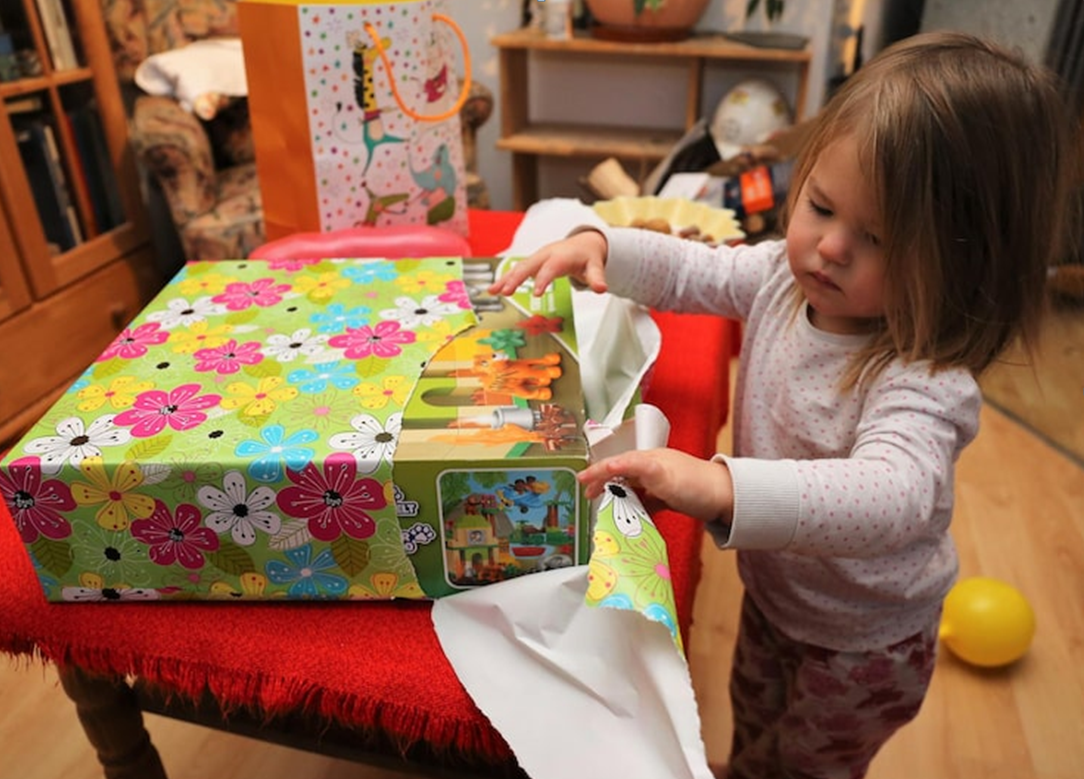Every parent knows the feeling of finding another colorful drawing tucked into a backpack or on the kitchen counter. Kid’s art fills your home with joy, creativity, and personality, but it also piles up fast. If you’re wondering how to manage your child’s growing collection without feeling overwhelmed, this guide on Kid’s Art Organization will help you store, display, and even let go of pieces in a way that respects both your space and your child’s creativity.
Why Kid’s Art Organization Matters
A child’s artwork isn’t just paper and paint. It’s a reflection of their imagination and growth. But without some structure, it can quickly take over your home. Organizing your kid’s art creates more than just a tidy space. It teaches children how to value their work and keep their surroundings neat.
An organized home also supports mental clarity. When clutter is reduced, kids can focus better, and parents feel less stressed. Whether it’s at home, school, or even during a move, knowing how to manage these creative treasures makes life easier.
Start with a Simple Sorting System
Before deciding where to store or display, sort through the art. This step makes everything manageable and helps you identify which pieces deserve special attention.
- Create three piles: Keep, Display, and Recycle.
- Involve your child: Let them choose a few favorites to keep or show off.
- Be realistic: Not every piece needs saving. Select artwork that holds meaning, shows progress, or captures a memory.
Once you’ve sorted, it’s easier to decide what stays at home, what can go to school, and what can be digitized for the future.
Storing Kid’s Art at Home Without the Clutter
Storage is often the toughest part of kid’s art organization. You want to keep memories safe without creating chaos. The key is to use systems that are easy to access and maintain.
Use clear bins or plastic sleeves. Label each with your child’s name, school year, or grade. This helps you find artwork quickly when you want to reminisce or show grandparents.
Consider digital storage. Scan or photograph each piece before recycling or gifting. You can use apps that organize art into digital albums or print photo books each year. This way, you preserve memories without stacks of paper filling drawers.
Rotate your collection. Choose a set number of items to keep displayed. When new art comes in, swap out older pieces. This method keeps the display fresh and the clutter minimal.
Creative Ways to Display Kid’s Art at Home
Displaying your kid’s art adds warmth and personality to your home. It also gives children pride in their creativity. You don’t need to be a professional decorator to make it look beautiful.
Create a rotating gallery wall. Use frames that open easily so you can switch out artwork every few weeks. Clipboards, cork boards, or even string and clothespins along a hallway can create a charming, flexible display.
Make art functional. Turn artwork into placemats, magnets, or printed notebooks. This transforms their creativity into useful keepsakes.
Involve your kids. Let them choose where to hang their favorite piece. Giving them control encourages confidence and respect for their art.
Kid’s Art Organization at School
Teachers and schools also face mountains of student artwork. Having an efficient system in place benefits both educators and parents.
At school, teachers can designate display areas for each student’s best work. Rotating displays every month keeps walls engaging and allows every child to feel recognized.
For take-home projects, schools can coordinate with parents. Instead of sending everything home weekly, bundle artwork at the end of a term. This gives families a chance to review the pieces together before deciding what to keep.
Some schools even host annual “Art Nights,” displaying student pieces before sending them home. Events like these turn organization into celebration, showing children their art has meaning beyond the classroom.
When It’s Time to Let Go
Letting go of your child’s artwork can feel emotional. Every piece represents time and creativity. Still, keeping everything isn’t practical. The goal is to honor their efforts while maintaining balance at home.
Ask yourself a few questions before parting with a piece:
- Does this artwork capture a milestone or special moment?
- Is it unique compared to others we’ve saved?
- Would a photo of it bring the same memory?
If the answer leans toward yes, take a picture and move on. You can even create an annual “art farewell” ritual with your child. Look through the year’s creations together, keep favorites, and recycle the rest respectfully. This teaches them the value of memories over materials.
Long-Term Kid’s Art Storage Ideas
If you’d like to keep certain pieces for years, choose storage that preserves their condition.
Use acid-free folders or boxes. Regular paper and cardboard can yellow over time, but acid-free materials prevent that.
Keep artwork flat and away from sunlight. Direct light can fade colors, so store boxes in closets or drawers.
Label everything clearly. Include your child’s name, age, and date on the back of each artwork or on a label. These details will matter later when looking back.
Digital storage also works well for long-term preservation. Backup digital copies to cloud storage or an external hard drive. Over time, this can become a meaningful digital archive for your child to revisit as an adult.
Creative Projects Using Old Kid’s Art
You don’t have to throw old artwork away. Many families repurpose it into creative projects. This approach makes organization fun and eco-friendly.
Here are a few simple ideas:
- Gift Wrap: Use drawings or paintings to wrap small presents.
- Cards: Cut and fold colorful sections into handmade greeting cards.
- Decorative Book Covers: Personalize notebooks or binders with your child’s art.
- Memory Collage: Combine pieces into one big framed collage to display proudly.
- Holiday Decorations: Turn artwork into ornaments, garlands, or tags.
Each of these ideas keeps your child’s creativity alive while reducing waste and clutter.
Teaching Kids the Value of Organization
Kid’s art organization isn’t only for parents. Involving your child in the process teaches important life skills like responsibility and self-awareness.
Start small. Encourage them to pick which pieces to display or store. Explain how keeping things organized helps them find and enjoy their artwork easily.
You can even assign a small art bin or folder as “their gallery.” This creates ownership and pride in keeping it neat. Over time, kids will naturally start to manage their collections more thoughtfully.
When cleaning, talk about the importance of caring for shared spaces. Whether it’s their room, a school art area, or a family space, tidiness creates comfort for everyone.
How Kid’s Art Organization Connects to Home and Real Estate
A well-organized home feels spacious, bright, and welcoming. Families looking to sell a house often don’t realize how clutter impacts first impressions. Organized children’s artwork adds personality without making spaces feel chaotic.
When potential buyers see a home with creative yet organized touches, it signals care and warmth. If you’re preparing your home for a sale, consider displaying a curated set of your child’s artwork in family spaces. It adds charm and character while keeping everything tidy.
Just like regular home maintenance, such as duct cleaning Utah homeowners often do to improve air quality, organizing your child’s art improves the home’s atmosphere. A clean, organized space helps everyone breathe easier, both physically and emotionally.
Answering a Common Question: How Do You Decide Which Kid’s Art to Keep?
Many parents struggle with this question. The best approach is simple: keep what’s meaningful, not everything.
Choose art that represents special memories or significant progress. You might save the first drawing they ever made, a self-portrait, or a project that shows creativity or effort.
Photograph everything else so you can remember it without physical clutter. Involving your child in this process helps them feel respected and part of the decision-making.
Maintaining the Habit of Organization
Once you’ve organized your kid’s art, the next step is keeping up with it.
Set a routine. Once a month, go through new artwork together. File, display, or recycle based on your system.
Use a small display limit. Keep only a few pieces out at a time. This avoids overload and makes each artwork more special.
Stay consistent. The more you maintain it, the less effort it takes over time. It becomes a natural part of your family rhythm.
Over the years, this routine not only keeps your home organized but also creates cherished memories of shared decision-making and creativity.
How Cleaning and Art Organization Work Together
Clean environments support creativity. When your child’s art area is tidy, they feel inspired and free to create more.
Make cleaning a natural part of the art routine. After every project, encourage your child to put supplies away. Wipe tables, store paints properly, and fold aprons. Small steps like these prevent chaos from building up.
When art areas stay clean, storage and display become easier too. You’ll spend less time searching for materials and more time enjoying creative moments together.
Conclusion: Making Kid’s Art Organization Meaningful
Organizing your kid’s art doesn’t mean reducing creativity. It’s about finding balance between memories and space. When you sort, store, display, and let go thoughtfully, you create a home that celebrates imagination without the mess.
From digital storage to creative reuse, every strategy helps you honor your child’s creativity while maintaining order. Whether you’re doing it at home, in school, or preparing your home for sale, these habits make life smoother.
Just like regular cleaning or even duct cleaning Utah families rely on to maintain fresh air, consistent art organization keeps your living space feeling light and joyful. With care and creativity, you can preserve your child’s imagination and still keep your home beautifully organized.



